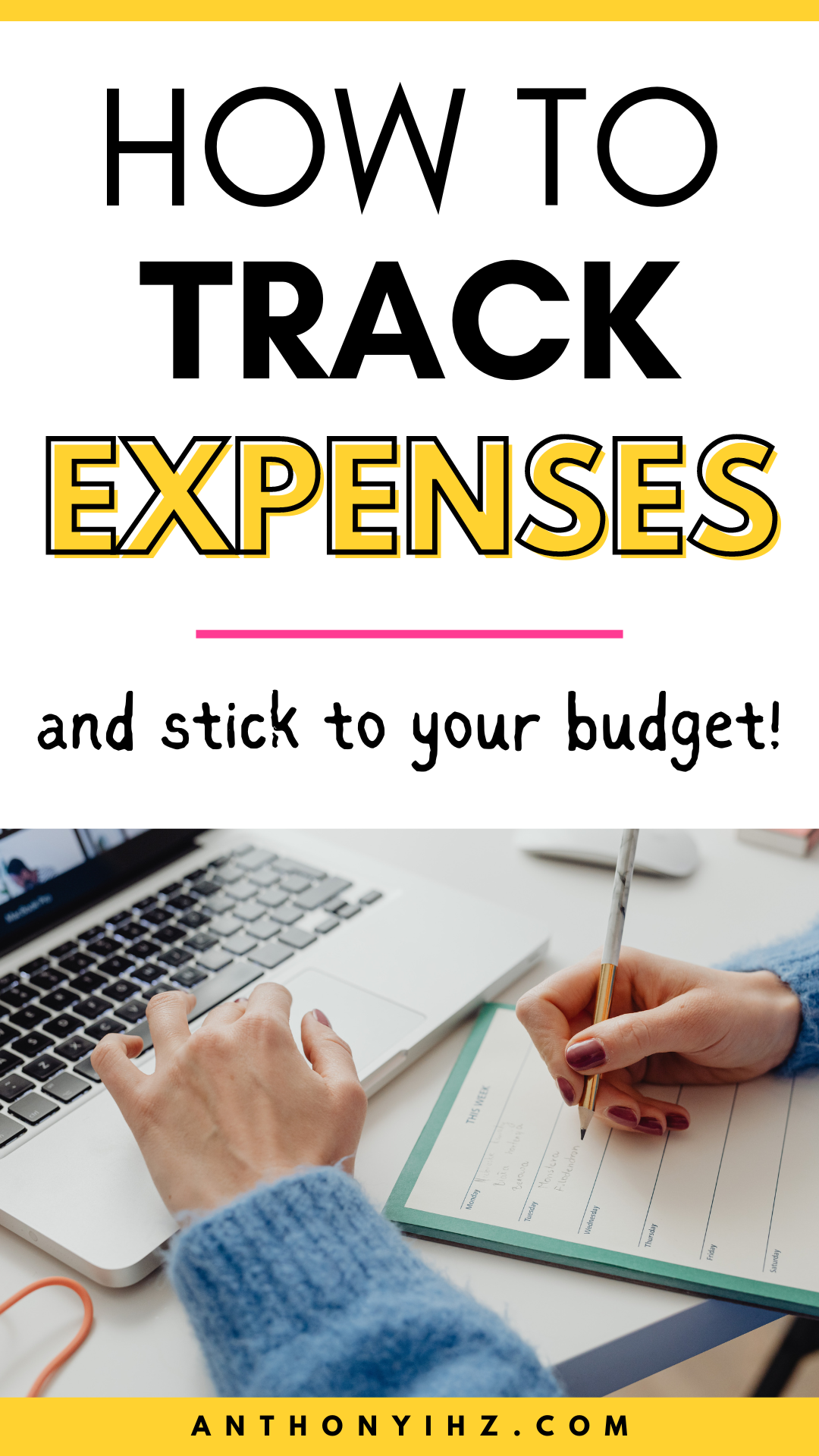
No matter how wealthy you are, spending recklessly can cripple your finances. The expenses you incur every month must be within your means. As soon as you begin to spend more than you earn, you are setting yourself up for financial failure. But interestingly, you may not know when your spending spirals out of control. This is why you must know how to track your expenses.
Personally, there’s a journal where I record all my expenses. I make sure that I spend according to my budgeting strategy, and this helps me to perfectly live below my means. I’m going to be sharing the same precepts and blueprint you can follow to start keeping track of your expenses.
Besides, if you feel this would be tedious and time-consuming, there’s no need to worry. I’ll introduce you to some of the best tools you can use to monitor your spending easily and save time.
Why Is It Important To Track Your Expenses
Tracking your expenses is important because you need to determine how your money is being spent. It is a good financial habit that encourages you to curb your spending and stick to your monthly budget. At the end of every month, you can monitor your expenses to see the areas you overspent or misused your finances.

How To Track Your Expenses In 6 Steps
One of the most essential aspects of managing money is controlling your living costs. To accomplish this important goal, you must set up a working system that enables you to monitor your spending. So, let’s delve into the 6-step plan for how to track your expenses:
Step 1: Build A Budget
It’s impossible to start tracking your expenses if you don’t have a monthly budget. You must have a money plan where every dollar that comes into your checking account has a purpose. This is what it means to budget your income. Contrary to what many people believe, budgeting doesn’t limit you. Instead, budgeting is the perfect way to control your spending.
To build a budget, you must start by listing your income. If you have any side hustle aside from your main job, include it in your list of income streams. If you are a single mom receiving child support, write it down too. The goal here is to determine how much you earn in total every month.
Once you can determine your income, the next thing to do is list your expenses in a particular order. This is the most crucial part of building a budget. Food, utilities, housing, transportation, and other essentials like debt payments and savings must be planned for. Depending on the size of your income, you can also include recreational costs in your budget.
Now, the last thing to do is subtract your expenses from your income to equal zero. This is called a zero-based budget. If your total monthly income is $7,500, your total expenses should be $7,500 as well.
Mind you, this doesn’t mean you won’t have any money left in your bank account. Remember, there’s a savings category that you have budgeted for. It doesn’t mean you are spending all your money at once.
Step 2: Track Your Streams Of Income
This is one of the major steps to track your expenses.
Some people have an irregular income while some don’t. For example, as a salary earner, your income is fixed. You already know how much to expect in your paycheck every month. However, someone who runs a small business doesn’t have a regular income. Depending on how profitable the month is, one could make more money than he made within the previous 30 days.
So, if you have an irregular income, it is important that you track it. What this means is you have to keep a record of how much you make every month. Over time, irrespective of how much you earn, you’ll have an idea of how to build a budget around it.
Step 3: Open Separate Bank Accounts
Having multiple bank accounts can play a very important role if you’re learning how to track your expenses.
You can’t have all your money in one place since it will make it difficult to focus on certain financial goals. For instance, you can’t build an emergency fund in your checking account. It has to be built with a separate high-yield savings account, where your money can grow without you tampering with it.
Other goals like planning for retirement or saving for your child’s college education can be done with a separate account.
Step 4: Label Envelops
There’s something called an Envelope System. At the beginning of the month, you label a number of envelopes with different spending categories. You could have an envelope for transportation and another one for giving.
Now, a certain amount of money should be placed in these labeled envelopes. If you finish spending the money in an envelope, it means you have exhausted the budget line for that particular expense.
The envelope system is one of the best tips for tracking your expenses because it lets you know exactly when to cut back on your spending.
Step 5: Create A Spreadsheet
Have you tried using a computer spreadsheet to build a budget before? I recommend this step as one of the ways to track your expenses because it’s very practical. Besides, if you don’t mind checking your computer regularly to monitor your spending, then you should give this method a trial. You can customize your budget exactly how you want and have the math done for you on the screen.
However, if you are married, make sure your partner also buys the idea of using a spreadsheet to monitor spending. Since you’re managing your finances together as a couple, you have to totally agree on the methods or strategies you use.
Step 6: Monitor Your Personal Finance Regularly
If you know how to track your expenses, then paying attention to your personal finance shouldn’t be a problem. It’s all a part of the plan.
Now, there are various aspects of your personal finance that need your attention. Areas such as debt payments, retirement planning, and savings must be monitored regularly. For example, if you fail to make the monthly minimum payments toward your debts, you could be faced with late fees. That’s an extra cost that can be avoided.
Also, when it comes to things like your retirement and emergency fund, you have to be very intentional about your decisions. These savings goals should be built in legit and reliable investment accounts that won’t disappoint you in the future.
The 5 Best Expense Tracker Apps
Making up your mind to track your expenses means you are ready to improve your financial situation. To make this goal more feasible for you, here are some of the best expense tracker apps you can install on your mobile phone:
1. Mint

Mint is currently one of the most popular tools for managing money effectively. Despite how efficient this app is, it’s completely free to use and available on both Android and iOS devices. You don’t have to subscribe to any premium plans to pay for special features.
I recommend Mint as the first app on this list because it helps you to track your investments and create savings goals. That’s not all. You can effortlessly monitor your credit history and see how well you are spending your income.
Another thing that makes Mint an amazing financial tool is that it allows you to sync your accounts and categorize transactions. Learning how to track your expenses would be so much easier when you have this tool.
However, there are a few reasons why Mint might not be the perfect tool to manage your finances. Firstly, the app is not allowed by all banks except you are lucky to use a bank that works with Mint. Another thing to keep in mind is that accounts may need reauthorization to sync.
2. QuickBooks

If you want to figure out how to keep track of your money easily, QuickBooks might be the best tool for you. This app was built to help both individuals and small businesses monitor transactions and other financial activities. You can send and track invoices in different currencies, snap pictures of receipts, and even link credit card accounts.
The app is also constantly updated to improve its features to meet your expectations, and this makes it one of the most efficient tools to control your finances. Besides, I think I should add that it’s accessible to both Android and iOS users.
However, unlike Mint, QuickBooks is not free to use. It’s a premium daily tracker expense app that requires a monthly subscription of at least $7.50. Also, this app doesn’t have chat support. It would be difficult to pass your complaints across to the company when you have to.
3. Expensify

When learning how to track your expenses, you can’t just ditch receipts. You may have to scan and reserve them for future purposes. Expensify was specially developed for this.
The app automatically scans, reads, and imports receipt details in multiple currencies. You can do this within minutes. If you frequently travel, this app would also be very useful to you. You can set trip reminders and flight delay notifications straight into your phone.
Bear in mind that Expensify is not entirely free. You are entitled to about 25 free scans, after which you have to pay $4.99–$9 every month to gain full access to all the features in the app. It doesn’t matter whether you use an Android phone or an iPhone, the app is compatible with your device.
4. Empower

If you are trying to figure out how to track your expenses as an investor, this is one of the best apps for you.
This amazing tool allows you to view all your investment and bank accounts in one app. This means with a few taps on your mobile phone, you can see how your investments are performing.
Empower is also a great financial app because it has several tools for managing and tracking your investments, categorizing expenses, and staying on top of your imminent bills. There are reporting tools in the app that make it easy to determine the asset location and growth of your investments.
Moreover, to help you make the right decisions as an investor, Empower offers advisory services. This is only available to users with a minimum of $100,000 in investable assets. Mind you, this app is totally free to use on your Android or iOS device.
5. Everlance

If you are self-employed, it is essential that you know how to track your expenses. This is because you generate your income independently and can’t afford to make costly mistakes. Everlance was built for people like you.
The app allows you to create an IRS-compliant mileage log and link your financial accounts to one source. You can export mileage and expense reports as PDF files or in Excel or CSV formats. It also has several other features you can use to manage your income right from your phone.
However, Everlance is not free, and it’s even more expensive than other premium financial tools. But as a new user, you can use the app free for 30 trips, then you can choose a monthly plan from $5.
Thankfully, the free trial would help you decide if the app is worth your investment. Before completing 30 trips on Everlance, you can switch to a different app or go ahead and pay for it eventually.
Final Words On How To Track Your Expenses
Getting comfortable with wise spending decisions is important to improve your finances. You can’t afford to splurge your money on purchases without being able to account for them. It would almost feel like you are wasting your hard-earned money.
So, it’s time you get started tracking your spending routinely. Keep doing it on a regular basis until it becomes a habit. Besides, this post has given you all the clues, tools, and steps to help track your spending from now on. No more excuses, start taking action.
Pin this for later!


